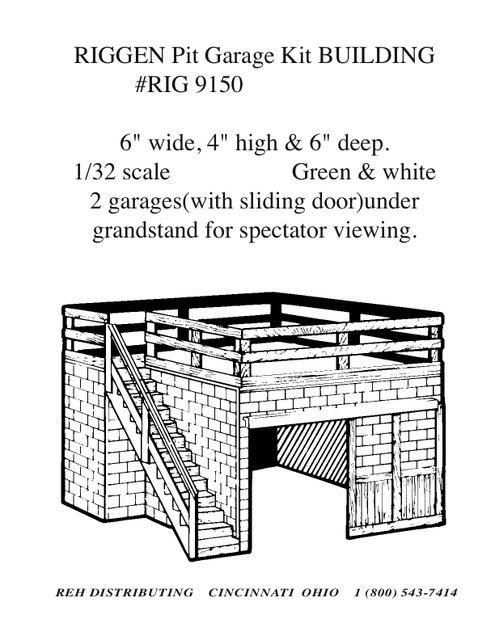
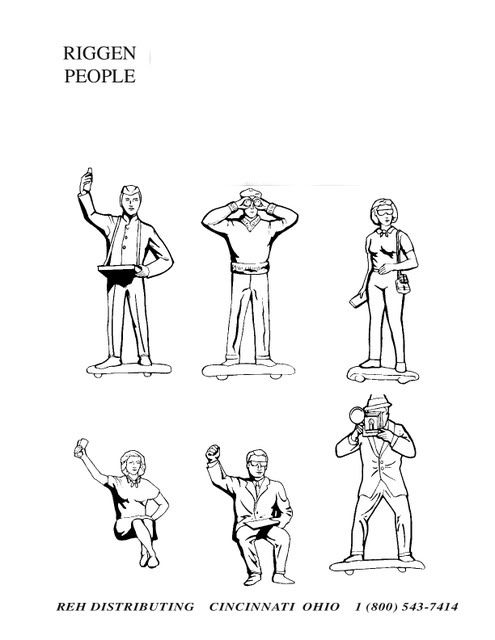
Riggen people and a cool tower, information sent by REH.
 Holden is working on unleashing its might on Australian roads as it revealed the HSV W427 at the Melbourne Motor Show. The HSV � Holden Special Vehicles � will be the fastest standard road car to ever come out of Australia, and will probably be one of the quickest globally as well. Unconfirmed power figures put the W427 at over 370kW and 640Nm of torque. Such numbers are seen only in saloons like BMW M5 and Mercedes-Benz E63 AMG. Many thanks to Corvette�s 7.0-litre LS7 power plant.
Holden is working on unleashing its might on Australian roads as it revealed the HSV W427 at the Melbourne Motor Show. The HSV � Holden Special Vehicles � will be the fastest standard road car to ever come out of Australia, and will probably be one of the quickest globally as well. Unconfirmed power figures put the W427 at over 370kW and 640Nm of torque. Such numbers are seen only in saloons like BMW M5 and Mercedes-Benz E63 AMG. Many thanks to Corvette�s 7.0-litre LS7 power plant.
To better utilize the power, a limited slip diff will be used in conjunction with a new high-strength 6-speed manual shifter.
The car receives GM product�s Magnetic Ride suspension which helps adapt the car to current road conditions for optimum handling. A number of exterior enhancements such as carbon fiber rear spoiler, 20-inch wheels and a new front fascia.
What a tribute Australia�s original �muscle car� which turned 20 years old today.
The car to be known in its final development stages as the W427 is finished in the same Panorama Silver paint scheme as the original Group A SS VL Commodore, released at the Melbourne Motor Show of 1988, exactly 20 years ago.
HSV Managing Director, Scott Grant, said the W427 was a tribute to how far the company has come in just twenty years. To be able to produce a vehicle of these proportions is truly remarkable, Scott Grant said.
The W427 will be quite possibly the fastest road registrable Supercar ever produced in Australia and among the quickest anywhere around the world, he said. While power output figures are still to be confirmed, the W427 is likely to produce in excess of 370kW of power and 640NM of torque.
It will also be one of the safest cars HSV has ever put on the road, Scott Grant said. A new six piston front braking system will provide a 50% increase in pad area, while the W427 also receives a revised ESP calibration, six air bags, improved handling and new Magnetic Ride Control settings.
Styling and design highlights include an all new front fascia, a three piece carbon fibre rear spoiler, 20 inch machined faced alloy wheel, unique exhaust tips and red leather interior.
Scott Grant said HSV would be introducing a unique customer relations program to accompany the launch of the new vehicle. The W427 will only be produced in limited numbers and we want to reflect that exclusivity in how we connect with our Supercar customers, Scott Grant said. This program will see the LS7 engine being fitted at Clayton, along with the dry sump system and a range of other engineering features. We are looking at opportunities to allow owners to visit HSV and view the unique manufacturing process that goes into building this car.
The W427 will go into production in the middle of the year and will be available for sale in dealerships in the third quarter of 2008. Make no mistake, while the specifications of the car unveiled on the stand today at the Motorshow may change slightly between now and when production begins, this car is destined to make as big an impact as the original Walkinshaw twenty years ago.
W427 key highlights*
Exterior
� All new Front Fascia exclusive to W427
� All new three piece rear spoiler in carbon fibre
� All new 20 inch wheel
Interior
� HSV performance seats in full red hot trim with W427 logo, steering wheel, gear shifter and console lid in full red hot leather
Powertrain
? 7.0 Litre, LS7 Engine with HSV specific calibration
? 370kW @ 6500 rpm
? 640Nm @ 5000 rpm
? Over radiator style cold air induction system with high flow air filter
? Dry sump lubrication system with 2 stage pump
? Hand fabricated aluminium oil reservoir, with internal baffles for high G loading
? Front mount, 13 row engine oil cooler
? Ceramic coated, high flow four into one extractors
? High flow catalytic converters and exhaust system (3 into 2 3/4 )
? Active bi-modal rear mufflers for exhaust back pressure management to improve noise quality
? High strength limited slip differential
? New high strength six speed manual gear box (TR6060)
? GMPT LS7 Clutch with new actuator and pedal assembly for high clamp loads
Suspension
? New springs, 30% stiffer than GTS
? Revised ride height 20mm lower than GTS
? New stiffer rear suspension bushing
? All new MRC calibration

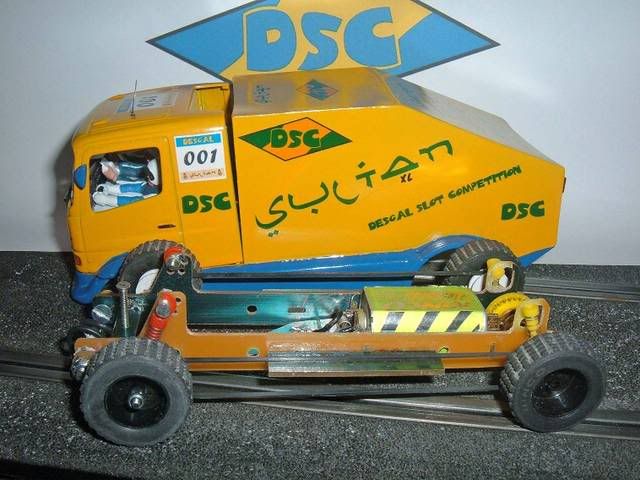
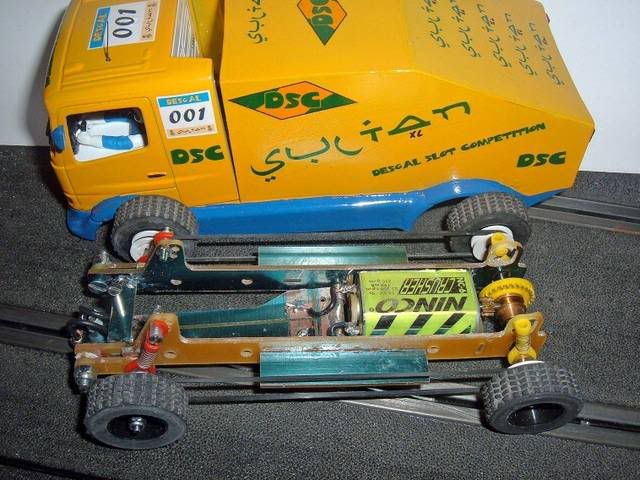
 As if the menacing Cupra�s look wasn�t enough, SEAT is now offering its UK customers an even scarier car to drive in, with the K1 Limited Edition Styling Kit. Purely a plastic surgery kit � the 2.0-litre turbo still kicks out 240 bhp/ 179kW. SEAT has gone a step further by slightly dropping the price of a standard Cupra by some 200 quid, helping to make good headway for the inclusion of K1 for future purchases.
As if the menacing Cupra�s look wasn�t enough, SEAT is now offering its UK customers an even scarier car to drive in, with the K1 Limited Edition Styling Kit. Purely a plastic surgery kit � the 2.0-litre turbo still kicks out 240 bhp/ 179kW. SEAT has gone a step further by slightly dropping the price of a standard Cupra by some 200 quid, helping to make good headway for the inclusion of K1 for future purchases.
Where the major changes are made is just about the only area allowed for general public consumption, which is the exterior. There�s more than just a passing resemblance to the Sport BTCC car, SEAT�s race-winning maverick, as BTCC forms the basic inspiration for the look.
Colours offered are Inferi Black, Emocion Red, Luna Grey and Candy white. Work has been done on both bumpers, side skirts and rear spoiler. Exhaust system has borrowed from big brothers Porsche and Audi by going central and oval for shape respectively. Wheels will be 18-inch alloys which cost �205 RRP and come in either black or white.




 When the Remshalden-based Opel connoisseurs at Irmscher launched their 315 bhp impression of the 1,335 kg (2,940 lbs) Opel GT last summer, we thought it was pretty darn good. Power from the 2.0-litre four-cylinder turbo had been hiked up another 60 hp from the standard GT roadster, delivering a sub-6 second sprint to 100km/h.
When the Remshalden-based Opel connoisseurs at Irmscher launched their 315 bhp impression of the 1,335 kg (2,940 lbs) Opel GT last summer, we thought it was pretty darn good. Power from the 2.0-litre four-cylinder turbo had been hiked up another 60 hp from the standard GT roadster, delivering a sub-6 second sprint to 100km/h.To celebrate its 40 year journey, Irmscher, founded by Gunther Irmscher in 1968 and currently headed by Gunter Irmscher Jr. has put out a vehicle "for the true connoisseur." To outshine the 300+ km/h Vectra that it produced for the company's 35th anniversary in 2003, Irmscher has decided to go over the top with the GT i40. Instead of relying on Opel's Ecotec fourpot, Irmscher has gone down an entirely different route with the power plant, by picking up a 6.0-litre V8 and shoehorning it into the GT. Not a measly V6, but a proper 480 hp V8, which should be enough to blow your trousers off! For more information, see the press release below.
If you're heading to the Geneva Motor Show, opening to the public on March 6, 2008, be sure not the miss the Irmscher Opel GT i40 at Irmscher's stand in Hall 2.
It�s the ingredients that make the difference! And here is the menu:
 Aston Martin�s V12 Vantage RS Concept has a new colour. Mako Blue is it, and it was chosen out of numerous names suggested by interested public members. When the car was unveiled by Aston Martin CEO Dr Ulrich Bez last December, he called on the public to send names they thought would suit the colour of the concept.
Aston Martin�s V12 Vantage RS Concept has a new colour. Mako Blue is it, and it was chosen out of numerous names suggested by interested public members. When the car was unveiled by Aston Martin CEO Dr Ulrich Bez last December, he called on the public to send names they thought would suit the colour of the concept.
One such quick-thinking world citizen was Mat Wilson whose name was the one picked. Wilson said: �The name came to me instantly, when I first saw the car. There is a distinct parallel between the shark and the car � both being the fastest of their kind.� Mako is the Maori word for Blue Lightning, which Aston Martin reckon is perfectly suited to their 600 bhp/ 447kW 6.0-litre V12. Indeed the car is said to be the fastest Aston Martin to ever come out with that badge on its sleeve.
The newly housed Aston Martin Design team has selected a name for the colour of the company�s V12 Vantage RS concept car, after inviting suggestions from the public at the opening of the company�s new Design Studio last year.
The V12 Vantage RS was unveiled in December by Chief Executive Officer, Dr Ulrich Bez, who, during his speech, invited suggestions to name the colour of the concept. The Aston Martin design team was inundated with suggestions, and after careful consideration has selected �Mako Blue� as the name of the concept colour.
Design Director, Marek Reichman said: �The name is taken from the Mako shark, which is the fastest and most agile shark known to man. We thought the name not only reflected the colour, but also that the nature of the shark was synonymous with the character of the car.
�The Maori translation for �Mako� is �Blue Lightning� which obviously is descriptive of both colour and car - a very befitting name.�
Mat Watson, who penned the winning name added: �The name came to me instantly, when I first saw the car. There is a distinct parallel between the shark and the car � both being the fastest of their kind.�
The environmentally sustainable Design Studio is the marque�s first purpose-built and fully-owned design facility. The Vantage RS concept features a 600bhp 6.0 V12 engine and has been subjected to a weight-loss programme. The result is the fastest ever road-going Aston Martin.
Aston Martin is currently evaluating feedback from customers to the Vantage RS concept, with a view to a possible low-volume production run should sufficient demand exist.
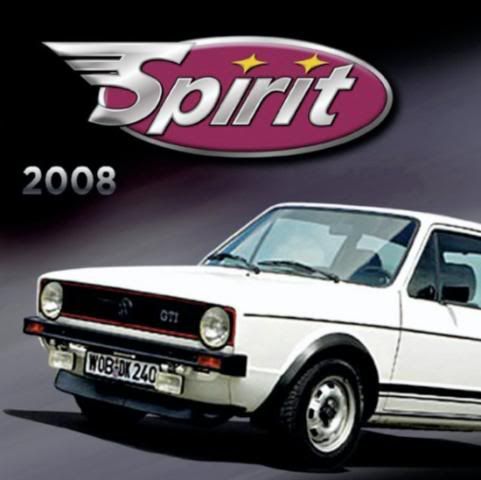
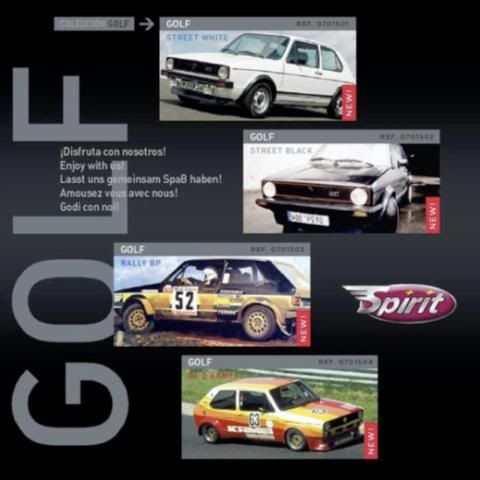





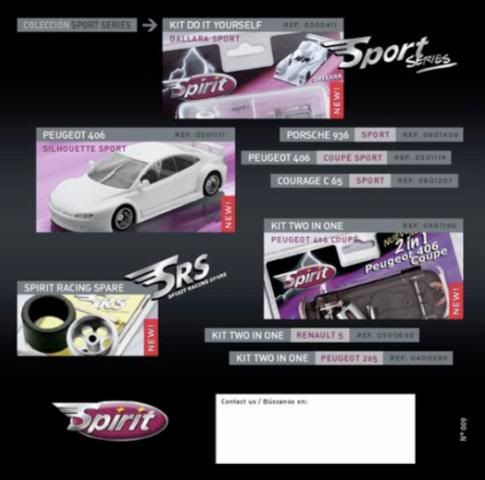 AVAILABLE 501103 Peugeot 406 Silhouette Elis
AVAILABLE 501103 Peugeot 406 Silhouette Elis Spiced-up versions of MINI's second-generation Cooper S Hatchback and new Clubman models are to debut at Geneva next month, signalling that Chili simply isn't a hot enough specification for the guys over at JCW. The re-Worksed versions carry adapted performance features from MINI's Challenge race car and offer the full range of John Cooper Works body styling upgrades.
Spiced-up versions of MINI's second-generation Cooper S Hatchback and new Clubman models are to debut at Geneva next month, signalling that Chili simply isn't a hot enough specification for the guys over at JCW. The re-Worksed versions carry adapted performance features from MINI's Challenge race car and offer the full range of John Cooper Works body styling upgrades. JCW have engineered a MINI Challenge for the road, coupling the race car's 211 hp 1.6-litre unit with newly-uprated sports suspension specifically-tuned for Works MINIs, larger disc brakes with uprated red callipers and a strengthened six-speed manual transmission. Prices are expected to start from �20,500 and �21,700 for the hatch and Clubman respectively.
These uprated features, akin to those on its racing-bred sibling, deliver output of 132 hp per litre and an impressive 40 mpg, while straight-line sprints to 62 mph take just 6.5 seconds in hatchback and 6.8 seconds in Clubman form. A new speedo has been designed to cater for the JCW's new 148 mph top speed.
At the touch of a button behind the gear lever, the on-board computer modifies the engine map for sharper steering responses and more dynamic performance, while an 'Overboost' function increases torque from 260 to 280 Nm over short stints. A host of electronic stability programs coset owners, while deactivating Dynamic Stability Control enables grip-enhancing Electronic Differential Lock, improving handling and traction.
But to ensure that their new-generation Cooper S Hatchback and Clubmans look the part are a new range of JCW body styling products. They include CHALLENGE 17-inch Cross-Spoke alloys with run-flats, large polished stainless steel exhaust tips and cooling-enhancing bonnet intake. Piano Black trim, Anthracite roof lining and a 10-speaker audio system head up the interior enhancements, while John Cooper Works branding adorns boot, grille, wheels and doors.
Press ReleaseThe new MINI John Cooper Works on the starting grid at Geneva
Factory-built JCW Cooper S Hatch and Clubman set for summer launch
� Engine modifications deliver 211hp and 0-62 in 6.5 seconds
� Engine, brakes, suspension settings and transmission adapted from MINI CHALLENGE race car
� Dynamic Traction Control makes MINI debut
� Full range of John Cooper Works body styling products available
� On-the-road prices expected to be �20,500 for the JCW Hatch and Clubman at �21,700
� New speedo design to accommodate the higher maximum speed
Production of John Cooper Works-tuned cars is all set to resume at MINI�s Plant Oxford after the launch of the second-generation MINI Cooper S Hatch and new MINI Cooper S Clubman. From July 2008, customers will be able to order factory-built MINIs that produce 211hp and complete a 0-62mph sprint in 6.5 seconds.
Motor sport has heavily influenced the engineering and development of these new MINIs that feature a larger twin-scroll turbocharger and direct petrol injection with common rail. The four-cylinder engine has had the same modifications as the MINI CHALLENGE race car, along with re-engineered brakes, suspension and strengthened gearing. Each upgrade combines to give the car a remarkable output of 132hp per litre combined with 40mpg.
Expected prices on-the-road are �20,500 for the MINI John Cooper Works and �21,700 for the MINI John Cooper Works Clubman. The cars will be unveiled for the first time to the public at the International Geneva Motor Show in March.
Engine
The engine specially developed for the MINI CHALLENGE race car is fitted to the MINI John Cooper Works cars. The basic unit is the 1.6 litre power plant supplied in the standard MINI Cooper S, but modifications have been made to the air filter, air mass meter, exhaust system and catalyst. Air supply to the modified larger turbocharger is increased through fitment of a larger air intake pipe, which in turn creates a quicker induction phase.
The Works engines from Hams Hall also come with reinforced, specially polished pistons, as well as a strengthened cylinder head for optimised stability and a modified cylinder gasket. The intake valves and valve seat rings have also been upgraded with stronger and more resistant materials. This reduces the engine�s compression ratio.
The new Sports exhaust system is instantly recognisable through the large polished stainless steel twin tailpipes. Modification of the exhaust system has also helped to reduce counter-pressure at the point of exhaust gas recirculation. Ducts in the exhaust manifold and turbocharger are split between two cylinders each. Congestion is therefore minimised when air is inducted to the turbocharger and �turbo lag� is virtually eliminated.
The John Cooper Works MINIs are the first models in the range to fulfil all the requirements of the European EU5 emission standards that come into force in 2009.
The material used in machining the turbine has been upgraded specifically for the Works engine, with maximum charge pressure increased from 0.9 to 1.3 bar, in order to maintain the highest possible temperature for a longer period in the combustion chambers. This lengthening of the combustion process helps to achieve the higher torque curve of the Works car at 260Nm at just 1,850rpm. The Overboost function briefly extends this further to 280Nm. This suits the character of a John Cooper Works car perfectly as Overboost is experienced exclusively through increased torque, not on engine output.
Safety and Driving Dynamics
MINI has always had sophisticated driving stability systems as standard. These include ABS Brakes, EBD Electronic Brake Force Distribution, CBC Cornering Brake Control, EDL Electronic Differential Lock, as well as DSC Dynamic Stability Control and Hill Assist. For the first time, DTC Dynamic Traction Control is added to the list.
DTC allows controlled slip on the drive wheels. For example, on a slippery surface, the driver can pick up speed in a controlled manner with the front wheels spinning slightly. When reaching the upper limit, DSC will intervene as usual. But the driver can deactivate the DSC/DTC systems if he wishes by the touch of a button.
In the DSC-off mode, the standard Electronic Differential Lock can be activated and controls cornering at higher speeds. If one wheel loses grip, drive is transferred to the wheel with better grip promoting the car�s traction and pulling force.
Chassis
The Sports Suspension has been specifically tuned for the Works models. However, even greater chassis rigidity can be achieved by ordering through dealerships the John Cooper Works suspension that lowers the entire car by 10mm.
Extra-large disc brakes adorned with uprated red callipers are fitted to Works cars. In addition, inner-vented discs are positioned behind the front wheels. The front discs are 17� in diameter while the rear set measure 16�. The brake discs are approximately 22mm larger than on the standard Cooper S.
Interior
The options included as standard on the John Cooper Works include a leather sports steering wheel, air-conditioning, interior trim in glossy Piano Black and an Anthracite roof lining.
An upgraded sound system is also included in the JCW package and features 10 speakers and an eight-channel amplifier for increased aural pleasure. For the first time, the MINI speedo has been increased to 160mph on the dial to accommodate the higher maximum speed of the JCW.
The six-speed manual gearbox has been strengthened to handle the powerful new engine.
The standard Sports button, located in front of the gear stick, activates a bespoke engine control map which produces even more dynamic performance and sharper steering response.
Exterior
The Works MINIs come with exclusive 17� light-alloy wheels in JCW Cross-Spoke CHALLENGE design, shod with Run-flat tyres, and weigh less than 10 kilos each.
The Works models can be identified by the newly-designed John Cooper Works logo on the boot and grille and wheels, as well as on the door trim.
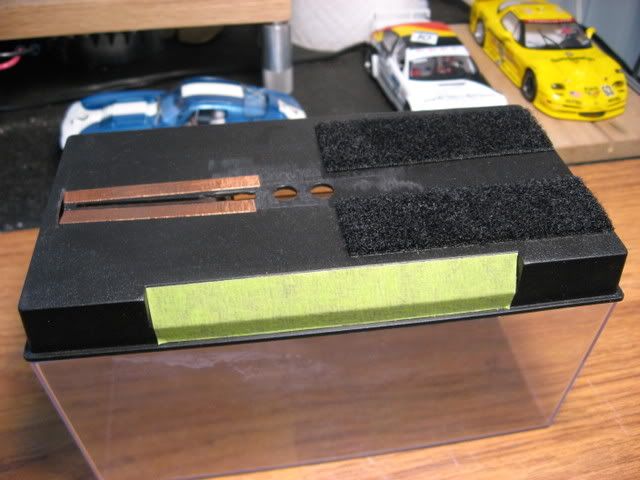
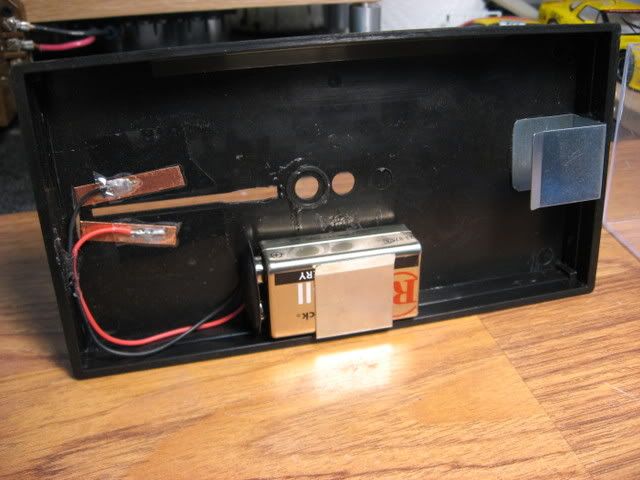
Here's a pic of the tire cleaning station being put to use on a Slot.it Nissan. This is the way to clean your tires for club racing and home use too. Its fast, easy and there is no mess to deal with.
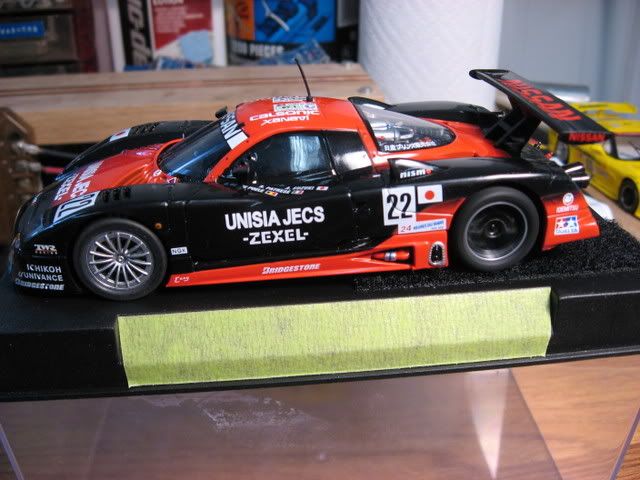
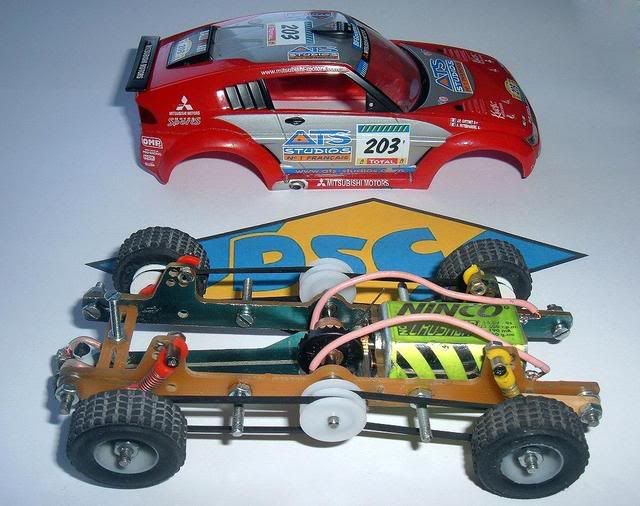 We are a new Brand from Portugal, DSC � Desgal Slot Competition.
We are a new Brand from Portugal, DSC � Desgal Slot Competition.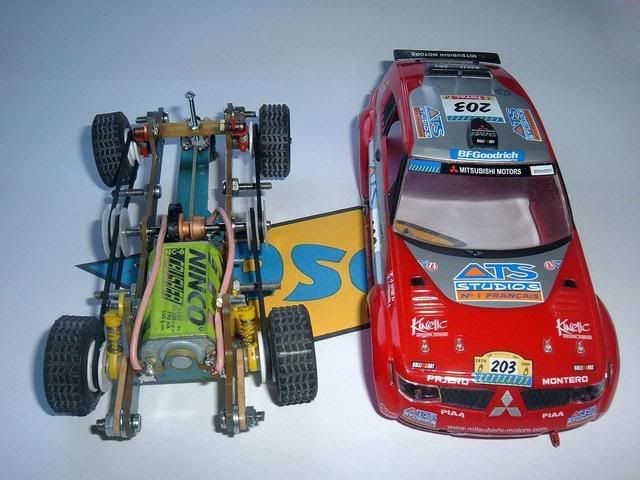
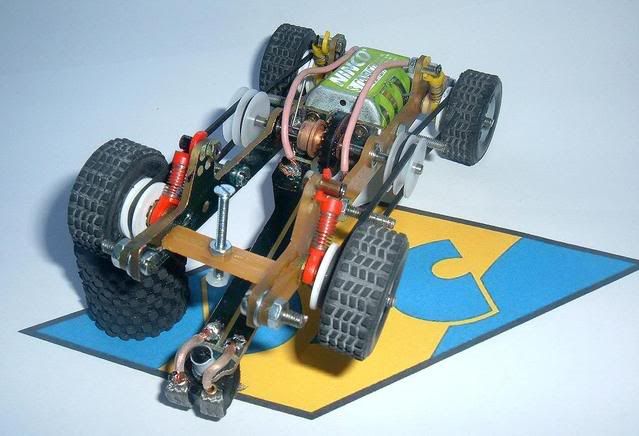
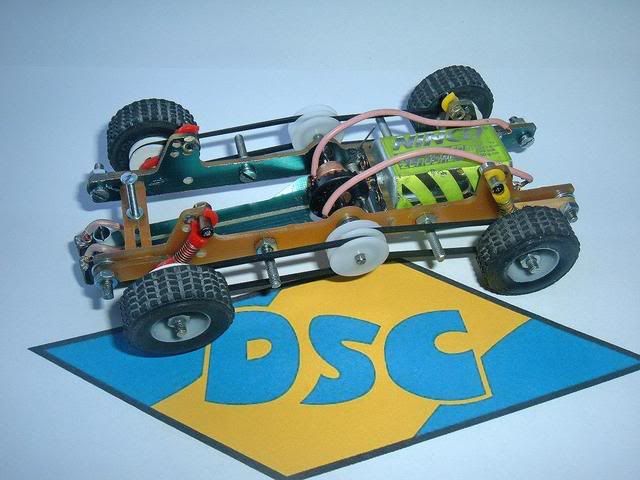
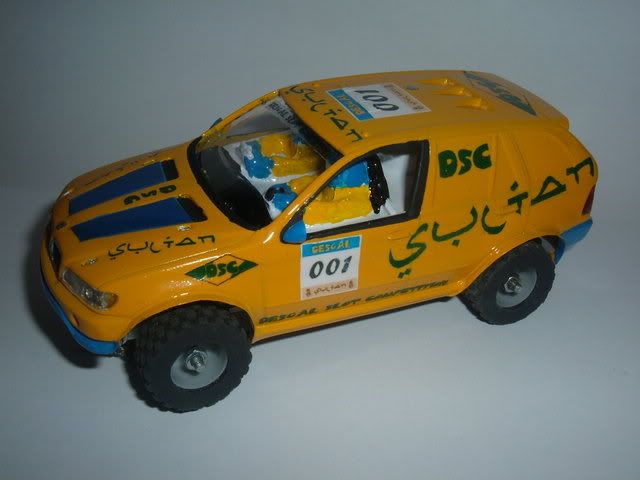
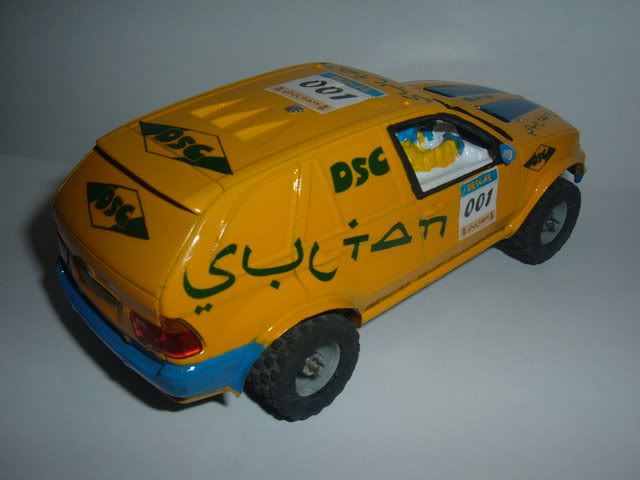



 The standard Porsche 911 Turbo Cabriolet was never really lacking in the performance department with its 480 horsepower engine, top speed of 193mph, and a 0-60mph time of just 3.8 seconds. This hasn�t stopped tuning firm TechArt from giving an already amazing car a few tweaks. The company will be using the Geneva Auto Show to debut their new GTstreet convertible which is based on the Porsche 911 Turbo Cabriolet.
The standard Porsche 911 Turbo Cabriolet was never really lacking in the performance department with its 480 horsepower engine, top speed of 193mph, and a 0-60mph time of just 3.8 seconds. This hasn�t stopped tuning firm TechArt from giving an already amazing car a few tweaks. The company will be using the Geneva Auto Show to debut their new GTstreet convertible which is based on the Porsche 911 Turbo Cabriolet.
TechArt�s GTstreet convertible features a powerful 630 horsepower engine which allows the car to reach a top speed of 345 km/h (214 mph). Being shown along side the new convertible is TechArt�s GTstreet coupe which debuted at last year�s auto show. The company considers their GTstreet vehicles to be among the fastest and highest performing road-worthy sport cars in the world.
In hall 2 of the 78th International Geneva Auto-Salon, the world premiere of TECHART Automobildesign will be unveiled. Here, the new TECHART GTstreet convertible will be presented to the press and international public; the car is based on the Porsche 911 Turbo Cabriolet.
Uncompromisingly sporty, unreservedly suitable for everyday use. TECHART is continuing this traditional philosophy with its GTstreet convertible. Since 2001, when the Porsche 911 Turbo model from the 996 series was used, vehicles bearing the TECHART GTstreet logo have been among the fastest and highest performing road-worthy sports vehicles in the world.
The new TECHART GTstreet is continuing this impressive trend, based on the current Porsche 911 Turbo generation. At the world premiere on 4th March 2008, this convertible model will stand alongside the GTstreet Coup�, which was officially launched in Geneva in spring 2007 and caused a real sensation.
Unmistakable characteristic appearance and breath-taking performance. The TECHART GTstreet convertible now develops 463 kW (630 hp) and can reach a maximum speed of 345 km/h.

 Tuning firm Kicherer has released a new kit for the Mercedes ML 420 CDI which offers an additional 56hp and 200Nm more of torque. Called the Kicherer ML 42 ICE, the overall specifications are now 360hp and 900Nm of torque. Acceleration from 0 to 100 km/h takes just 6.1 seconds, half a second quicker than a non-tuned model. Top speed for the ML 42 ICE is 280 km/h (174mph).
Tuning firm Kicherer has released a new kit for the Mercedes ML 420 CDI which offers an additional 56hp and 200Nm more of torque. Called the Kicherer ML 42 ICE, the overall specifications are now 360hp and 900Nm of torque. Acceleration from 0 to 100 km/h takes just 6.1 seconds, half a second quicker than a non-tuned model. Top speed for the ML 42 ICE is 280 km/h (174mph).
Exterior changes include the body kit from a Mercedes ML 63 AMG, 20-inch AMG wheels with a special black varnish, high performance brakes, an electronic lowered suspension and a four-pipe sports exhaust. Leather is added to the interior�s roof, dashboard, doors, and in several other locations. Real carbon fiber trim is applied throughout the interior and on the new ergonomic sport steering wheel.
Kicherer ML 42: Cold as Ice
Kicherer now has a tuning kit available for the ML 420 CDI bestowing an extra 56 hp and 200 Nm more torque to an already powerful SUV, thus increasing the effective horsepower from 306 hp in the standard model to a superb 360 hp. At the same time, the maximum torque of 700 Nm is increased to a terrific 900 Nm.
Just as spectacular is the performance of the so-called Kicherer ML 42 ICE. Accelerating from 0 to 100 km/h in just 6.1 seconds, it is a whole half a second quicker than its series counterpart. The maximum speed has been increased to approximately 280 km/h.
The exceptional performance of the CDI power units tuned by Kicherer are impressive, as are the high degree of elasticity and favourable fuel consumption, which is at a standard level despite the increased power. As with the basic vehicle, Kicherer engines also comply with the Euro 4 exhaust standard and, of course, are just as suitable for any vehicle equipped with diesel particle filters.
But Kicherer has gone even one step further and perfected the details of the ML.
Its exterior looks have been adapted to match the increased performance by adding an AMG ML 63 body kit, AMG 20-inch wheels with special varnish, an electronic lowered suspension and a four-pipe sports exhaust. High-performance brakes ensure that fast off-road enthusiasts still have the appropriate deceleration.
The precision of the Kicherer team can also be seen in the interior. The roof interior, dashboard, door trim and other surfaces have been covered with the finest Kicherer leather. Real carbon trim parts add the necessary sporty accentuation to the otherwise luxurious surroundings.
The driver has the pleasure of an ergonomic sporty steering wheel with gear paddles - also finished in carbon.
A really cool complete package � Ice in name and Ice in nature
 Citroen has unveiled its C2-R2 MAX homologation package, a move that's not just good news for anyone who's all about race-bred hot-hatches. The car also confirms Citroen's intent to compete in the FIA Junior World Rally Championship in 2008. The C2-R2 MAX is scheduled to be homologated by the FIA on March 1, and will be available as a kit through Citroen Sport.
Citroen has unveiled its C2-R2 MAX homologation package, a move that's not just good news for anyone who's all about race-bred hot-hatches. The car also confirms Citroen's intent to compete in the FIA Junior World Rally Championship in 2008. The C2-R2 MAX is scheduled to be homologated by the FIA on March 1, and will be available as a kit through Citroen Sport.
The C2-R2 MAX fits in between the C2 Super 1600 and C2-R2, offering a performance boost at a more affordable price for rallyists. Changes over the C2-R2 include a 190 horsepower 1599cc engine and brakes, a revised suspension with a wider track and an adjustable rear, and hydraulic steering. Citroen says the upgrades will enable the car to dominate its class as well as challenging cars from higher classes.
To drive the C2-R2 MAX's abilities home, Citroen let 2007 European Rally champion Simon Jean-Joseph and FIA Junior WRC rookie S�bastien Ogier put the cars through their paces at Satory�s Val d�Or circuit. Both drivers will be campaigning Citroen C2s in the FIA Junior World Rally Championship for 2008.
CITROE?N REVEALS C2-R2 MAX
Citroe?n has today revealed the new Citroe?n C2-R2 MAX. The car is aimed at motorsport
customers, and will be sold in kit form by Citroe?n Sport�s customer division. Before taking
to the world�s special stages, Simon Jean-Joseph and Se?bastien Ogier launched the all-new
C2-R2 MAX at Satory�s Val d�Or circuit.
The new car, which will be homologated by the FIA on the 1st March 2008, was designed to the new
FIA �Group R� regulations. Jean-Franc?ois Lie?ne?re?, Citroe?n Sport�s customer competition manager,
explained: � We felt that it was necessary to expand the range of our competition cars, as we saw a
gap between our two best-selling C2 rally variants: the C2 Super 1600 and the C2-R2. This new
�intermediate� car can be run to a budget, but it also has more spirited performance than the C2-R2.
The C2-R2 MAX appeals both to the heart and to the head, and it offers the best compromise between
performance, price and driving pleasure available on the market today. �
The modifications over the standard C2-R2 are chiefly to the engine, which gets an increase in power,
more sophisticated suspension, stronger brakes, adjustable rear suspension, and a hydraulic steering
rack. � From the outside, the car looks largely the same, � commented Alexis Avril, Citroe?n Sport�s
customer competition technical manager. � The front and rear track are just a little bit wider. The main
changes are under the bonnet, with a 1599cc engine that puts out 190 horsepower. � Last year, the
C2-R2 proved its performance on the FIA Junior Championship as well as many different European
national championships. Thanks to this latest evolution, drivers of the C2-R2 MAX will be able to fight
for R2 victory and above all they will be able to rival cars from the class above.
Citroe?n united two extremely talented drivers to stage this demonstration: Simon Jean-Joseph, 2007
European Rally Champion with a Citroe?n C2 Super 1600, and Se?bastien Ogier � a member of the
prestigious Equipe de France FFSA (backed by the French national motorsport federation) and
Echappement magazine�s young driver of the year. Citroe?n Sport director Olivier Quesnel said: � Simon
has a great deal of experience in rallying and thanks to his exceptional talent he will be a fantastic
ambassador for the company and for the C2-R2 MAX all over Europe this year. As for Se?bastien Ogier,
he will get the chance to make his debut on the FIA Junior World Rally Championship in an Equipe de
France FFSA-backed Citroe?n C2 Super 1600 � which has been made possible through a joint effort from
Citroe?n Sport and the French Federation. His six-rally programme will start in Mexico at the end of the
month. �
Citroe?n will therefore be present on the FIA Junior World Rally Championship once more, and it will
also reprise the �C2 Junior Experience�. � After the promising results we obtained last year, we�re
delighted to continue the scheme in 2008, � added Olivier Quesnel. � We already have six competitors
signed up: four in a C2 Super 1600 and two in a C2-R2. It�s worth remembering that if the winner of
the 2008 Junior World Rally Championship drives a Citroe?n C2, he will earn two rallies with a WRC car
in 2009. For reasons of fairness, Se?bastien Ogier � who is competing on the FIA Junior World
Championship � will not take part in the C2 Junior Experience. Citroe?n will also be present on several
European national championships this year through some of its subsidiaries, distributors and
customers. �
 Volkswagen�s Tiguan is already getting some interesting makeovers, latest courtesy of Bavarian 4x4 specialist Delta. Two models are created, a road version and an offroad sibling. A few changes have taken place in this manner: suspension has been lowered by some 30mm (for a small fee of �490) for the road car, with flared wings, wider wheels and a sport exhaust system to sound the part.
Volkswagen�s Tiguan is already getting some interesting makeovers, latest courtesy of Bavarian 4x4 specialist Delta. Two models are created, a road version and an offroad sibling. A few changes have taken place in this manner: suspension has been lowered by some 30mm (for a small fee of �490) for the road car, with flared wings, wider wheels and a sport exhaust system to sound the part.